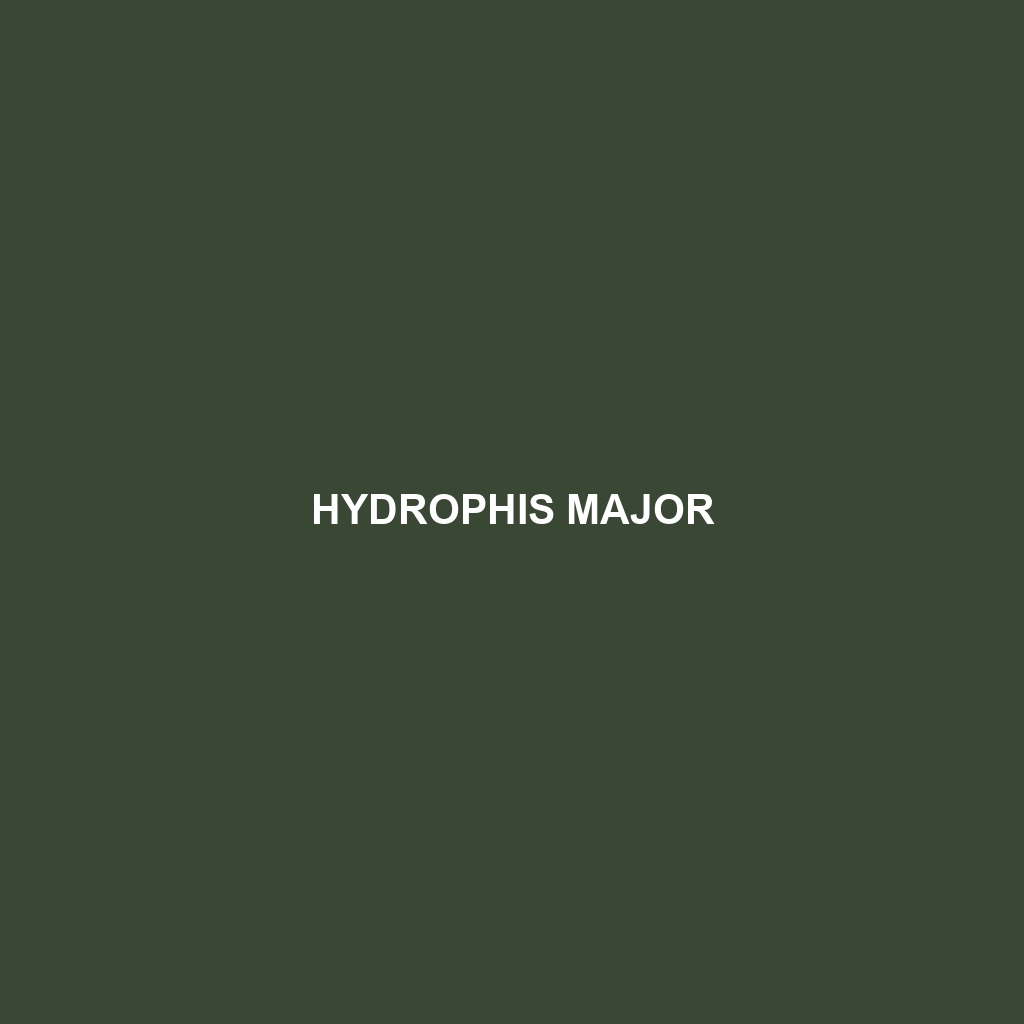Common Name
Hydrophis major
Scientific Name
Hydrophis major
Habitat
Hydrophis major, commonly known as the greater sea snake, primarily inhabits the coastal waters of the Indo-Pacific region. This species is predominantly found in shallow marine habitats, including coral reefs, lagoons, and along sandy shores. Rainforests near the coast also play a significant role in its ecosystem, as they provide essential nutrients that impact adjacent marine environments. The climate where Hydrophis major resides is typically tropical to subtropical, with warm temperatures and high humidity levels. These coastal ecosystems form a critical breeding ground and nursery for various marine life, making them a vital habitat for the greater sea snake.
Physical Characteristics
Hydrophis major exhibits a unique set of physical characteristics that distinguish it from other sea snakes. Adults can reach lengths of up to 2.2 meters (7.2 feet), with slender, elongated bodies adapted for an aquatic lifestyle. Their coloration is typically a dull green or brown, providing excellent camouflage against the seafloor and vegetation. One of the most distinguishing features of Hydrophis major is its flattened, paddle-like tail that aids in swimming. Furthermore, it possesses small, smooth scales, which help reduce drag in the water, enhancing its agility and speed.
Behavior
The behavior of Hydrophis major is particularly fascinating, as it showcases a range of adaptations suitable for marine life. This species is primarily diurnal, meaning it is most active during the day. Unlike many terrestrial snakes, it is not known for migration; instead, it prefers to inhabit a specific home range. Social interactions are minimal; however, during the breeding season, males may engage in competition for females. Mating rituals can include elaborate displays and physical wrestling among males. Notably, Hydrophis major has shown unique hunting techniques, often employing stealth to ambush prey rather than relying solely on speed.
Diet
Hydrophis major is predominantly carnivorous, feeding mainly on fish and eels found in its marine habitat. Its diet primarily consists of small, active marine organisms, which it captures using rapid strikes. Unlike terrestrial snakes, which may consume larger prey, this sea snake specializes in catching smaller fish that frequent coral reefs and sand flats. Its hunting strategy includes both stalking and ambushing, allowing it to be an effective predator in its environment. The ability to subdue its prey quickly is enhanced by the presence of potent venom, which is primarily used for immobilization rather than consumption.
Reproduction
The reproductive cycle of Hydrophis major is intriguing and complex. Generally, the mating season occurs during the warmer months, with females producing live young rather than laying eggs, a reproductive strategy known as ovoviviparity. Gestation lasts approximately 4 to 6 months, resulting in the birth of around 6 to 15 live offspring. Newborns are typically around 30 centimeters (12 inches) in length at birth. Parental care is minimal; however, the ability to give live birth offers a higher survival rate for the young in their aquatic environment, as they are immediately independent and capable of hunting.
Conservation Status
Currently, Hydrophis major is classified as “Least Concern” by the International Union for Conservation of Nature (IUCN). However, despite its stable status, threats such as habitat destruction, pollution, and climate change pose significant risks to its population. Overfishing and bycatch in fishing nets also impact its numbers. Conservation efforts are essential to monitor and protect the marine ecosystems where this species thrives, along with measures aimed at reducing human impact on these fragile habitats.
Interesting Facts
Hydrophis major possesses several intriguing adaptations. Notably, this species has specialized salt glands that allow it to excrete excess salt from seawater, enabling it to thrive in a saline environment. Furthermore, it is capable of holding its breath for extended periods, often remaining submerged for up to two hours while hunting. Many people are unaware that despite their venomous nature, these snakes are relatively docile and pose minimal threat to humans if left undisturbed.
Role in Ecosystem
This comprehensive species description of Hydrophis major includes essential information about its habitat, physical characteristics, behavior, diet, reproduction, conservation status, unique facts, and role in the ecosystem, all structured in an SEO-optimized HTML format.
